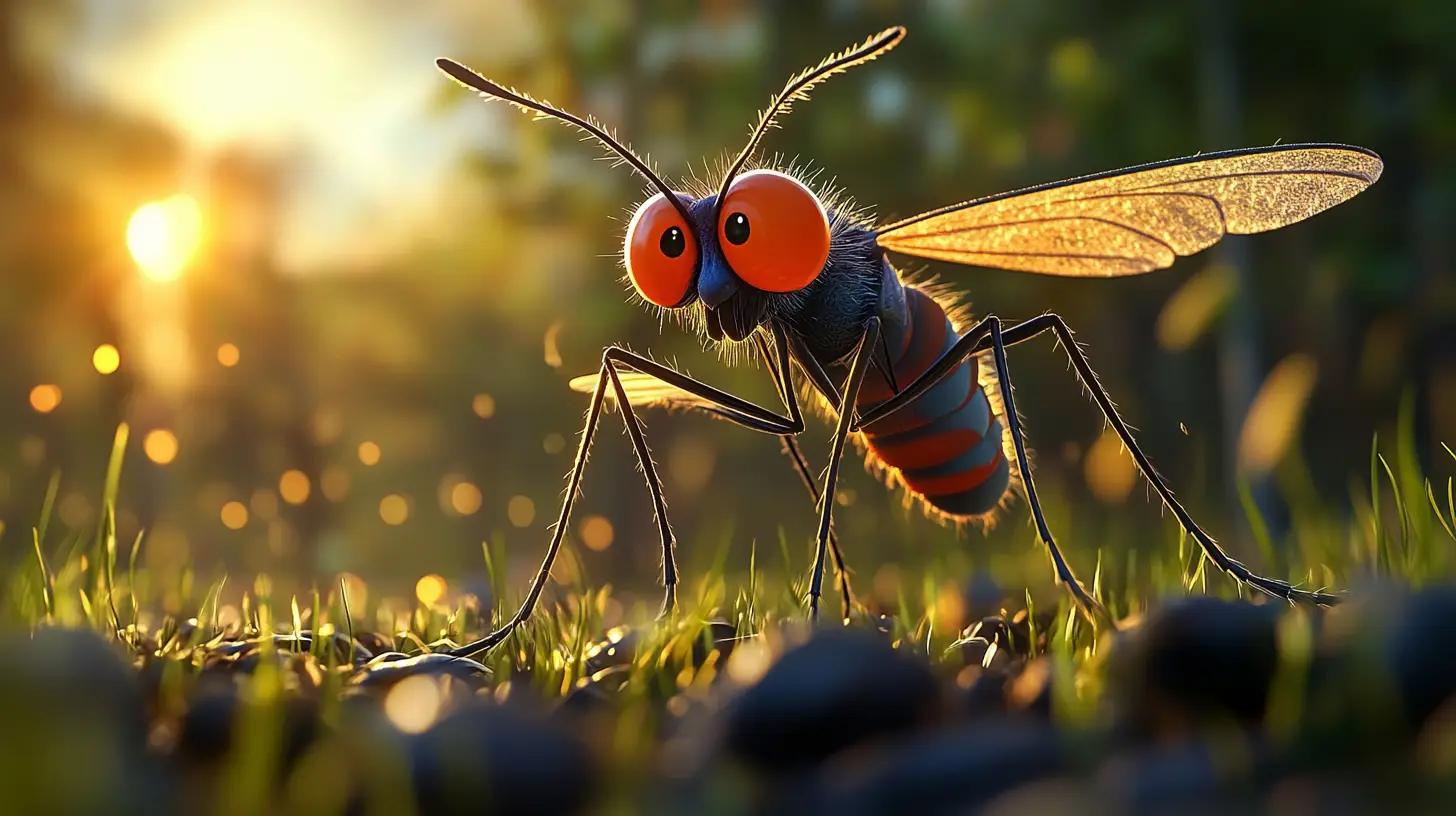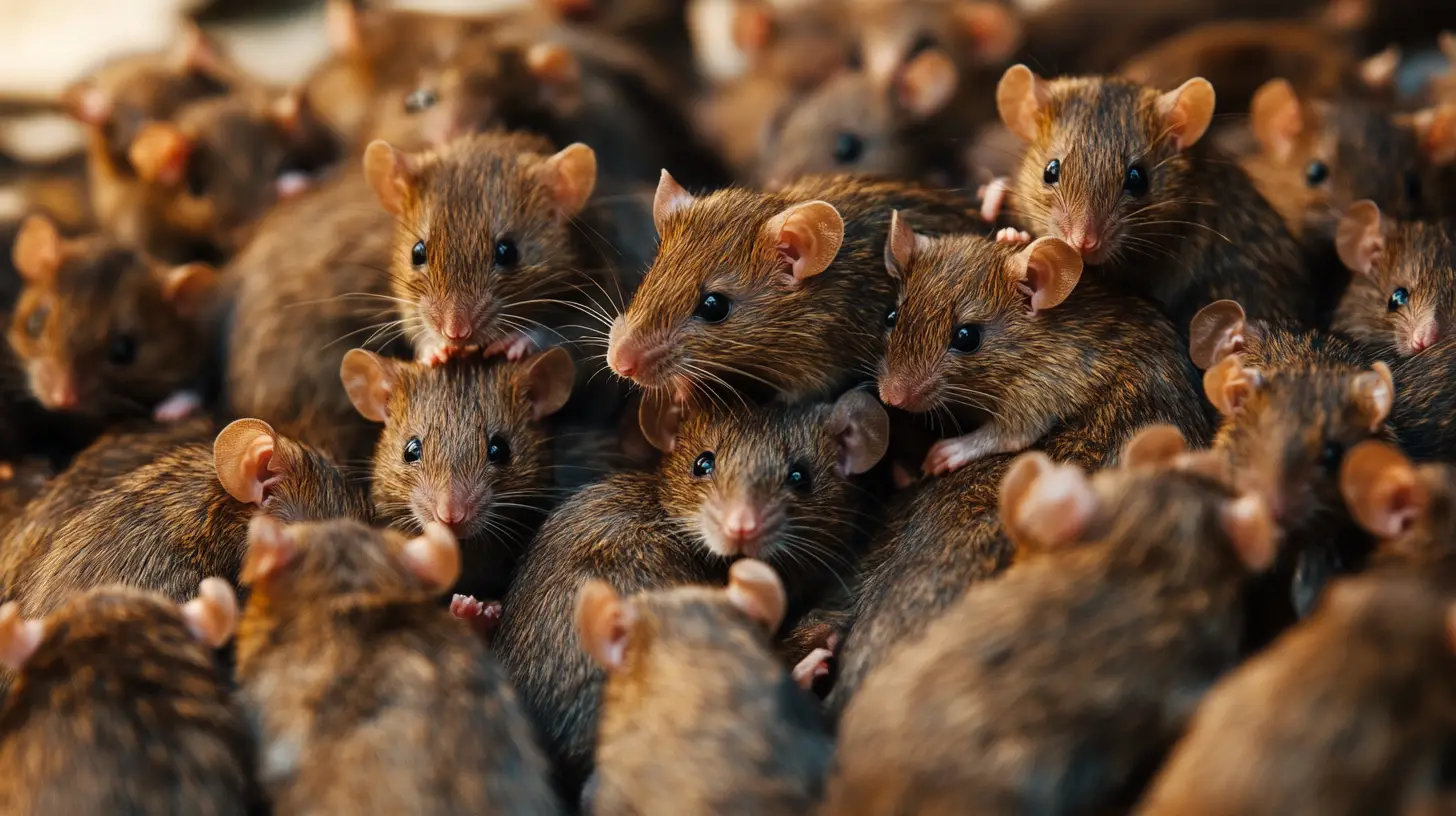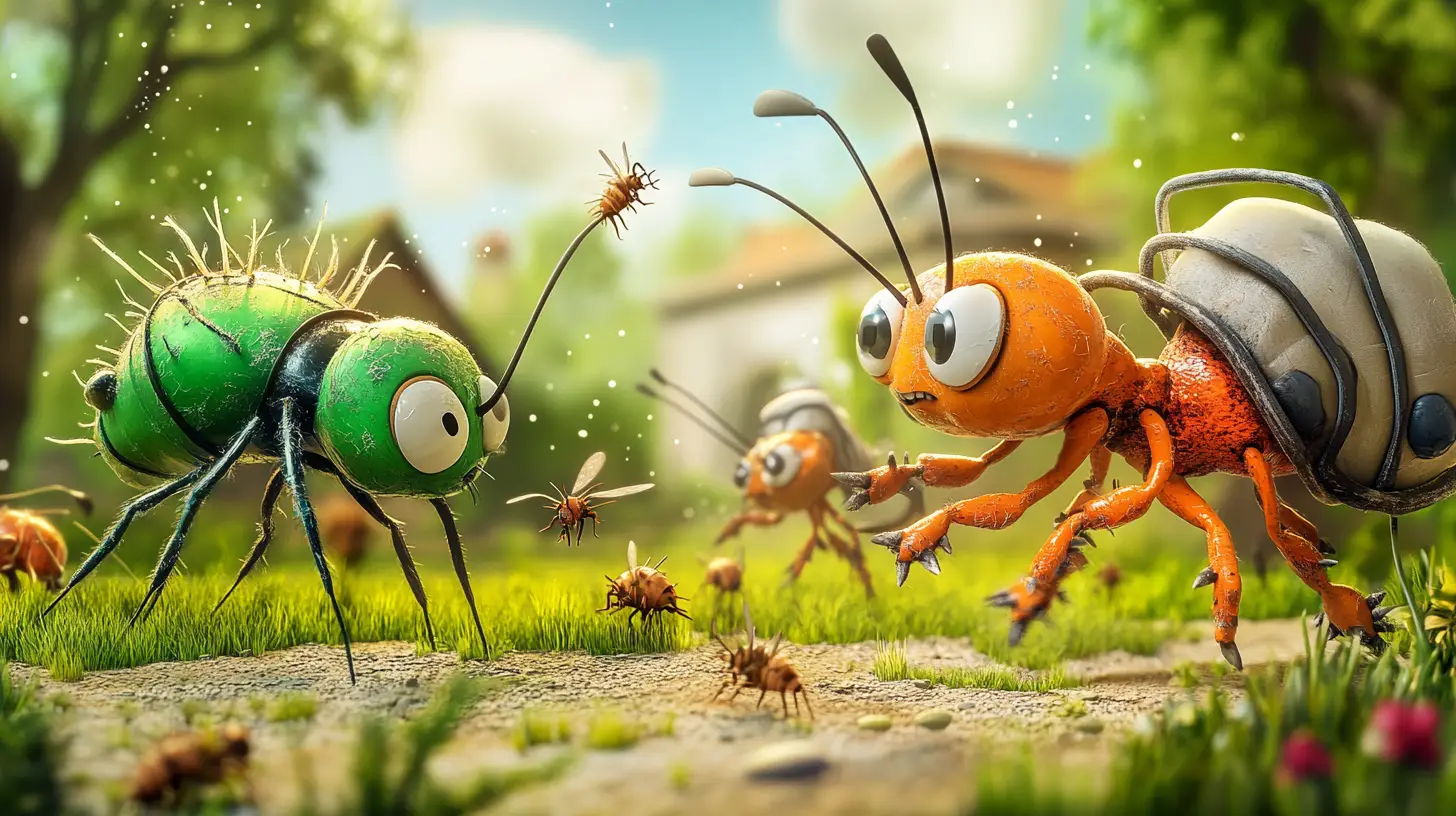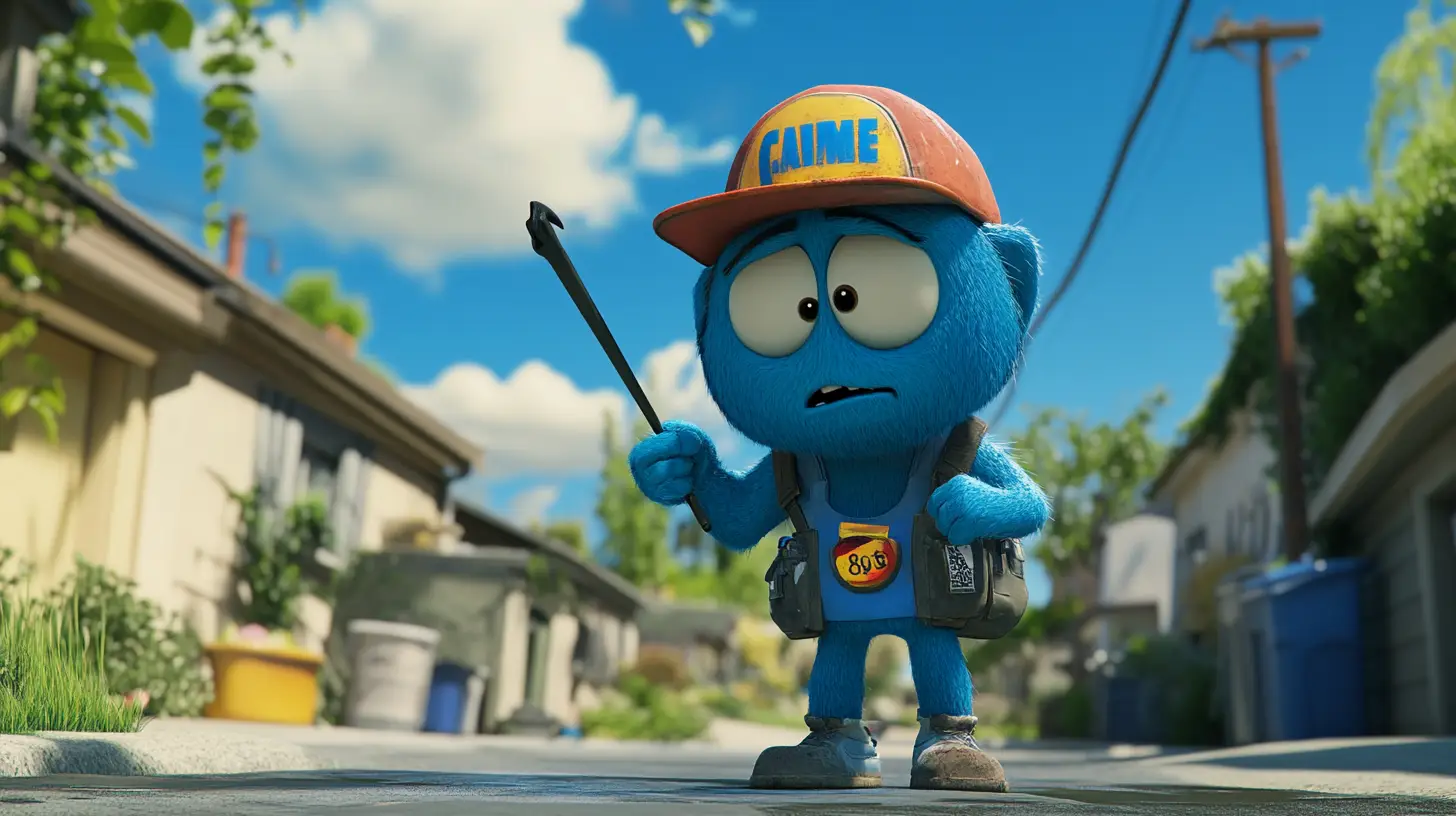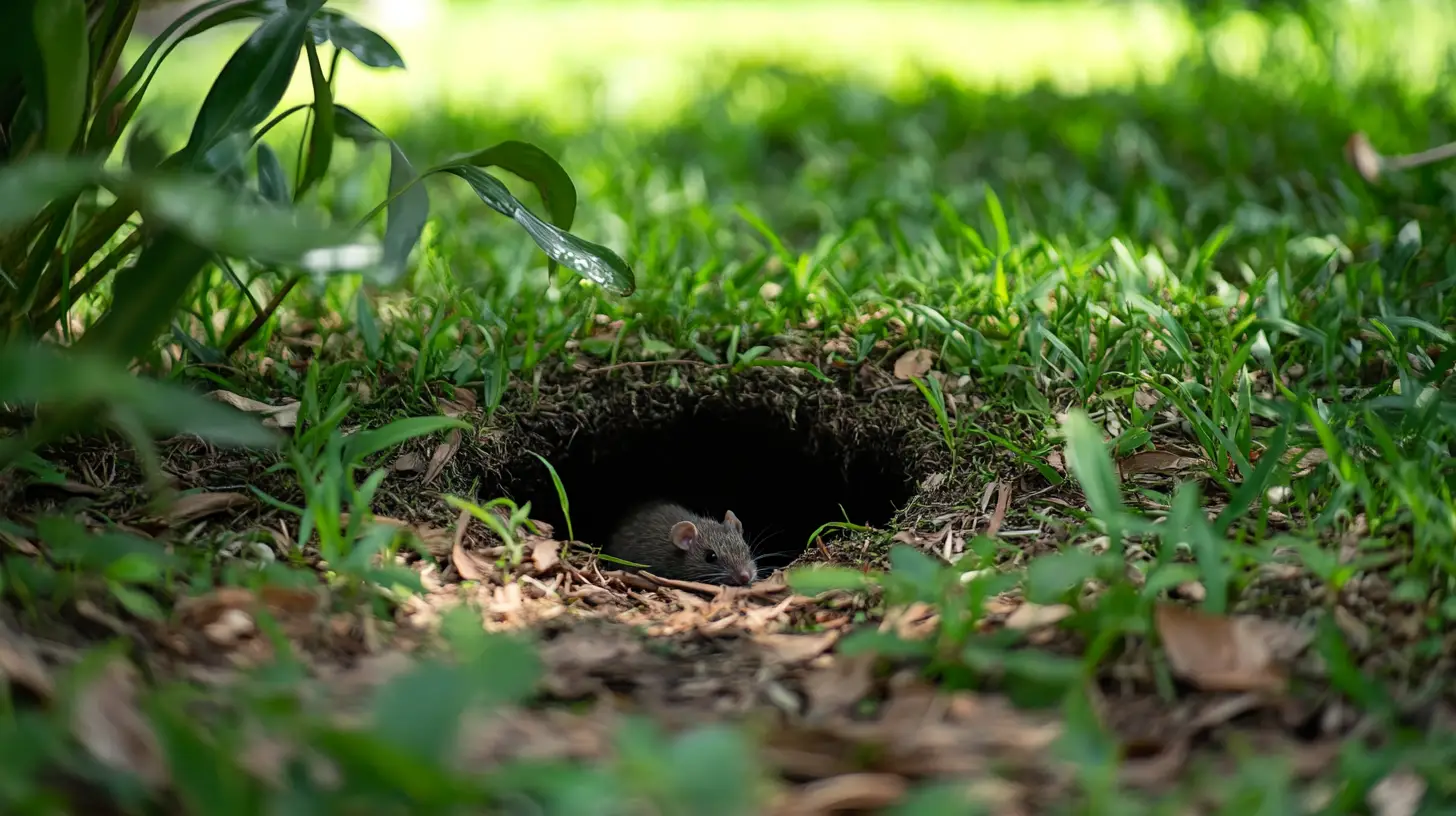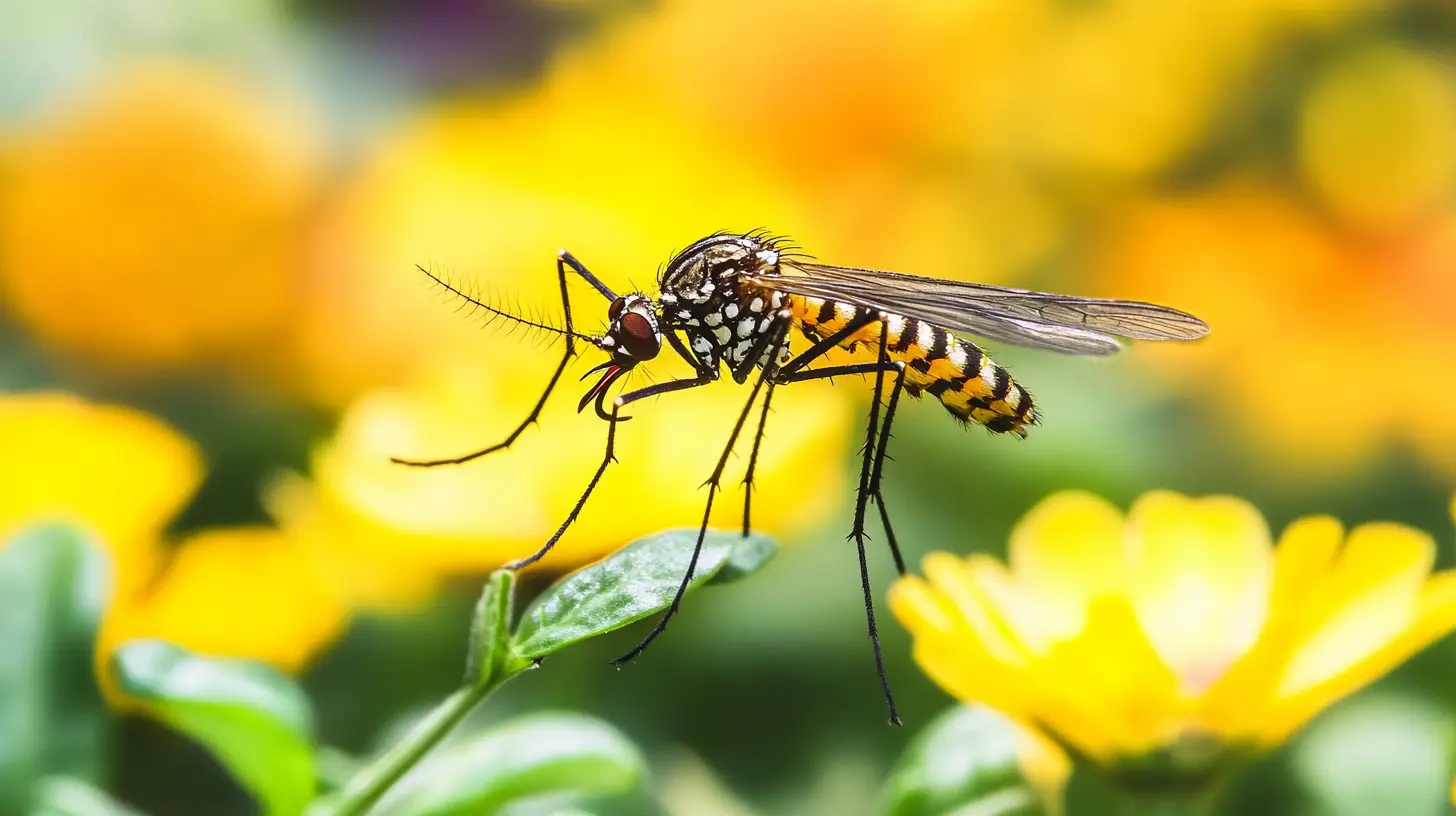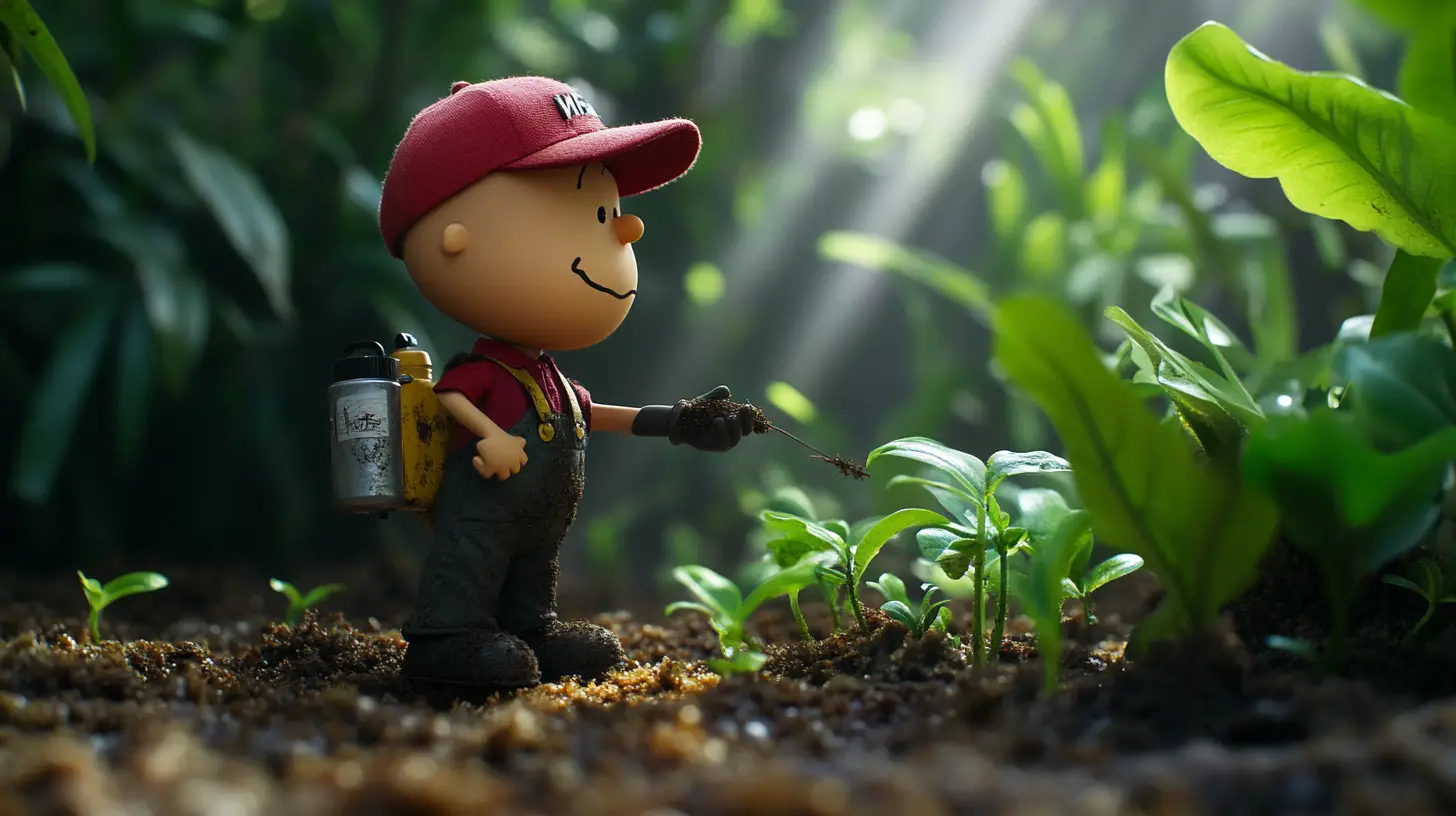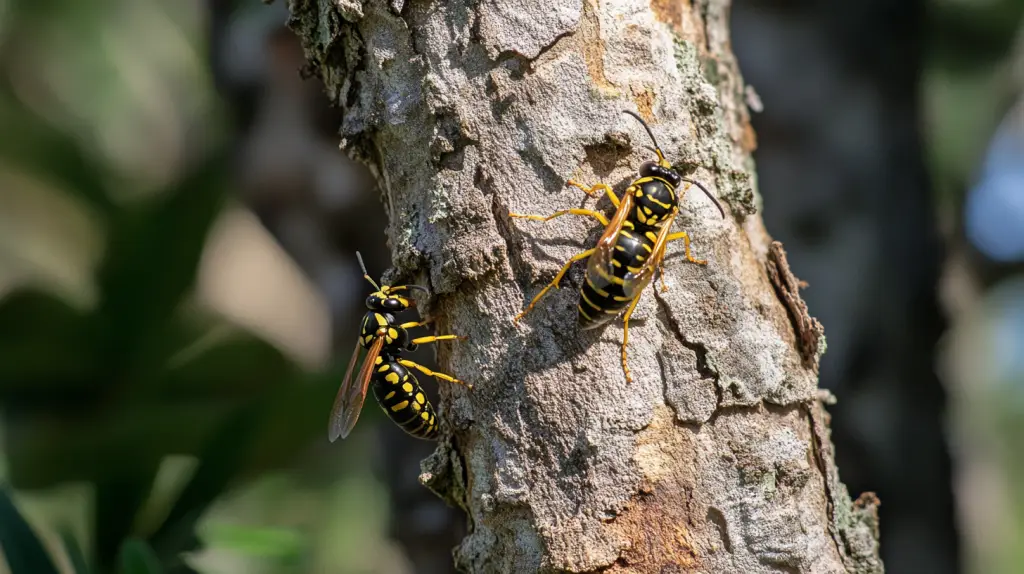
Table of Contents
Yellow jackets aren’t just a minor annoyance—they’re aggressive insects, especially during late summer and fall here in Lakewood Ranch. Unlike bees, which lose their stinger after one attack, yellow jackets sting multiple times, making them a serious safety concern. As the seasons shift and their food supply dwindles, these buzzing invaders become even more hostile, scavenging for sugary treats and meats at every opportunity.
To effectively get rid of yellow jackets, it’s essential to understand their habits and social makeup. Yellow jackets are social insects that live in colonies, with each colony consisting of a queen, workers, and drones. The queen establishes the nest in spring, laying eggs that develop into worker wasps responsible for expanding the nest, foraging, and defending their territory. At the end of the season, all workers and male drones die, leaving only the queen to hibernate through the winter. She will start a new colony the following spring.
Whether you’re unwinding in your garden or hosting friends outdoors, staying ahead of yellow jackets ensures your yard remains a safe place to relax. Professional pest control in Lakewood Ranch offers solutions tailored to these aggressive pests, providing inspections and treatments to help keep your outdoor moments sting-free.
Key Takeaways
- Yellow Jacket Identification: Recognizing yellow jackets by their slim, segmented bodies and vibrant markings is essential. Unlike bees, they can sting multiple times, making them more aggressive and defensive.
- Nesting Habits: Yellow jackets often nest in ground cavities or hidden structural voids. Identifying these nests is crucial for effective removal and maintaining safety in outdoor spaces like gardens and yards.
- Removal Strategies: Various methods exist to eliminate yellow jackets, such as insecticidal dust application, soap and water mixtures, and bait traps. Safe removal typically occurs in the evening when they are less active.
- Behavioral Patterns: Understanding yellow jackets’ seasonal activity and behavior patterns helps in early nest detection, ensuring better management and prevention of aggressive encounters.
- Ecological Role: While aggressive, yellow jackets contribute to pest control by preying on insects. Balancing their ecological benefits with safe removal practices is key to maintaining harmony in the environment.
Yellowjacket Identification
Yellowjackets are a familiar sight here in Lakewood Ranch, especially during warmer months when they become more active. Known for their aggressive behavior and distinctive appearance, correctly identifying yellowjackets is the first step if you’re looking to get rid of yellow jackets and protect your outdoor spaces. Here’s how to spot them:
Yellow Jacket Identification Features
- Size: Yellowjackets are relatively small, measuring between 3/8 to 5/8 inch (9 to 15 mm) long—smaller than some other wasps but just as formidable.
- Color: They feature a signature pattern of bold black and yellow stripes, with a head marked by a combination of black and yellow. The body has distinct bands that help differentiate them from other insects.
- Body Shape: Their thin waist (called the petiole) separates the thorax from the abdomen, giving them a sleek, segmented appearance. Unlike bees, which have more rounded, hairy bodies, yellowjackets are smooth and slim.
- Wings: Yellowjackets have transparent, elongated wings that fold neatly against their bodies when at rest, giving them a streamlined look.
- Antennae: Their long, segmented antennae are another key identifier, typical of wasps, helping them detect food and sense threats.
Yellow Jacket Nest Characteristics
- Yellowjackets build paper-like nests using chewed wood fibers mixed with saliva, giving them a lightweight, papery texture.
- These nests are often hidden underground, in wall voids, attics, or tucked away in shrubs and trees, with only one small entrance.
- A yellowjacket nest is typically gray or brown with a wavy surface—a sign to stay cautious if you spot one on your property.’
- Some underground yellow jacket nests can extend 3 to 4 feet deep. The nests are elaborate with multiple chambers to house the queen, larvae, and food storage.
Yellow Jacket Behavior
Yellowjackets are highly territorial and aggressive, particularly when protecting their nests. Unlike bees, they can sting multiple times, making encounters especially dangerous. Their scavenging nature draws them to sweet foods and proteins, which is why they often show up uninvited at outdoor gatherings.
Early in the season, yellow jackets hunt for protein to feed their developing larvae. As the season progresses, they shift to sugar-based foods—which is why they are notorious for swarming soda cans and sugary treats in the fall.
Distinguishing Yellowjackets from Other Wasps
- Yellowjackets vs. Bees: Yellowjackets are sleeker, with smooth bodies, whereas bees have fuzzy, rounded bodies for collecting pollen.
- Yellowjackets vs. Hornets: While both are wasps, hornets are generally larger and have different color patterns, often with more black and less yellow.
Knowing how to identify yellow jackets is crucial when planning to get rid of yellow jackets safely and effectively. Their aggressive nature and hidden nests make them a challenge to handle on your own. If you suspect a nest near your Lakewood Ranch property, contacting a licensed pest control service ensures proper removal and helps keep your yard safe and enjoyable.
How to Get Rid Of Yellow Jackets Like A Professional
Yellow jackets can be dangerous and aggressive, especially if their nests are disturbed. Following a clear plan is essential to get rid of yellow jackets safely and effectively.
Here’s a step-by-step approach to eliminate these stinging insects while minimizing risks.
Step 1: Locate Yellow Jacket Nests
To remove yellow jackets, start by identifying the location of their nests. Since yellow jackets are most active during the day, that’s the best time to observe where they enter and exit.
- Look for Entry Points: Focus on areas with constant insect activity, such as wall gaps or small holes in the ground (for underground nests).
- Mark Entry Locations: Use chalk or small markers to note multiple entrances for later treatment.
- Inspect During Peak Activity: The hottest part of the day is when yellow jackets are busiest, making nests easier to spot.
- Plan to Treat at Night: Once identified, wait until night to treat the nests when yellow jackets are least active.
Step 2: Get Rid of Yellow Jacket Nests
The most effective time to remove a nest is at night when all colony members are present, and their vision is poor. Always wear protective clothing to avoid getting stung.
- Use a Pyrethrum Aerosol Spray:
- Spray products like Stryker 54 Contact Aerosol or PT 565 directly into the nest’s entry points.
- Pyrethrum aerosols form a gas that fills the cavity, killing the yellow jackets on contact.
- Wait for 10-15 Minutes:
- Allow the aerosol to dry, ensuring that the initial treatment has taken effect.
- Apply Insecticide Dust:
- Use Tempo Dust or D-Fense Dust around the entry points and inside the nest to prevent future hatch-outs.
- Botanical options like Evergreen Dust offer an eco-friendly alternative.
- Reinspect the Next Day:
- Check the nest for activity. If there are still signs of yellow jackets, repeat the treatment until the colony is eliminated.
Successfully getting rid of yellow jackets requires patience and proper technique. By following these steps, you can eliminate nests and prevent future infestations, ensuring your home and outdoor spaces remain safe and enjoyable.
How To Get Rid of Yellow Jackets Naturally
Yellow jackets can quickly turn your peaceful outdoor moments into a stinging nightmare. If you’re looking for effective, non-toxic ways to handle these aggressive insects, here are a few natural strategies to get rid of yellow jackets and reclaim your space.
- Remove Food Sources: Yellow jackets are scavengers, attracted to sugary drinks and leftover food. Keep garbage cans sealed tightly, remove fallen fruit from the ground, and clean up any food scraps after meals to make your yard less inviting.
- Use Essential Oils as Repellents: Peppermint, clove, and lemongrass oils are known to repel yellow jackets. Mix a few drops with water in a spray bottle and apply it around doors, windows, and areas where yellow jackets frequent.
- Set Traps with Sugar Water: Make a simple homemade trap using a jar filled with sugar water or fruit juice. Add a drop of dish soap to break the surface tension—this will cause yellow jackets to drown. Place these traps away from areas you want to enjoy to lure them away.
- Install Decoy Nests: Yellow jackets avoid nesting near other colonies. Hanging a decoy nest can trick them into staying away. You can find ready-made decoys online or at home improvement stores.
- Tackle Nests Safely at Night: If you discover an active nest, approach it with caution. Yellow jackets are less active at night, so this is the safest time to apply natural solutions, like soapy water, to disrupt their activity. However, for larger nests, consider contacting pest control professionals to avoid stings.
With these simple yet effective methods, you can naturally get rid of yellow jackets and enjoy your outdoor spaces without fear.
Recognizing Yellow Jackets and Their Behavior
If you’re trying to get rid of yellow jackets in Southwest Florida, it’s important to focus on the species most likely to be causing problems in the region. The Southern Yellow Jacket (Vespula squamosa) is the primary culprit in this area, thanks to its adaptability and preference for warm climates.
These wasps, prevalent in Lakewood Ranch and across the Southeastern United States, differ from bees by their slim, segmented bodies and vibrant black and yellow markings. Unlike bees, yellow jackets have a smooth stinger allowing them to sting multiple times, making them more aggressive and defensive when threatened.
Yellow jackets play important roles in ecosystems due to their behavior as both predators and scavengers. They control pest populations by feeding on insects like caterpillars and flies, an essential service in agricultural settings.
When disturbed or threatened, yellow jackets’ aggressive nature becomes evident, especially as they defend their nests located in secluded places such as underground cavities or structural voids within human habitats.
Recognizing and understanding these aggressive behavior patterns aids in strategically getting rid of yellow jackets around your home or garden. Observing their intense activity early in the season helps identify potential nesting sites. By pinpointing yellow jacket nests—often discovered through observing frequent entry and exit points—you can mitigate their presence effectively.
Yellow jacket activity peaks in late summer and fall, when food sources become scarce, making them more aggressive in their search for sustenance. This is when they are most likely to invade outdoor spaces and confront humans.
In Lakewood Ranch, where maintaining outdoor spaces is essential, timely recognition and understanding of yellow jackets’ behaviors enable precautions against their stings and nuisances. By watching these patterns, you assure safer outdoor activities while acknowledging their ecological contributions.
Varieties of Yellow Jackets and Their Nests
Yellow jackets, common in areas like Lakewood Ranch, exhibit diverse behaviors and nesting habits. Recognizing these can aid in efforts to get rid of yellow jackets, especially for maintaining balance in local ecosystems.
When working to get rid of yellow jackets, it helps to know which species you’re dealing with. The two most common in North America are the Eastern Yellow Jacket (Vespula maculifrons) and the German Yellow Jacket (Vespula germanica).
While the Eastern Yellow Jacket is native to the region, the German Yellow Jacket is an invasive species that has rapidly spread. Both species are aggressive and known for building nests underground or inside wall voids, posing a threat to anyone nearby. Identifying the species can help you choose the most effective removal strategy to keep your home and outdoor areas safe.
Common Yellow Jackets (Vespula vulgaris)
Eastern Yellow Jackets (Vespula maculifrons)
Southern Yellow Jackets (Vespula squamosa)
German Yellow Jackets (Vespula germanica)
Understanding these varieties enhances your ability to target removal efforts effectively, minimizing their impact on human activities while respecting their ecological role. Managing nests properly, especially in residential areas like Lakewood Ranch, ensures safety and outdoor enjoyment without compromising the benefits yellow jackets provide as natural pest controllers.
How to Prevent Yellow Jackets
To get rid of yellow jackets, focus on prevention strategies that deter them from nesting near your home. Regularly inspect your property for potential nesting sites and seal any openings in structures. Keep outdoor areas clean by promptly disposing of food waste and securing trash cans with tight-fitting lids.
Consider planting natural repellents like mint or basil around your garden to discourage yellow jackets. By staying vigilant and employing these preventative measures, you can minimize the risk of yellow jacket infestations and enjoy a safer, more pleasant outdoor environment.
Frequently Asked Questions (FAQs)
What are yellow jackets, and how do they differ from bees?
Yellow jackets are aggressive wasps known for their slim, segmented bodies with vibrant black and yellow markings. Unlike bees, which sting once, yellow jackets can sting multiple times, because their stingers don’t detach, unlike honeybees. Their venom contains an alarm pheromone, signaling other colony members to attack.
They also differ in nesting habits, often creating nests in ground cavities, eaves, or tree branches. Building their nests from chewed wood fibers mixed with saliva, creating a paper-like material.
Why is it important to control yellow jackets?
Controlling yellow jackets is crucial for maintaining a safe environment, as their aggressive nature can disrupt outdoor activities and cause painful stings. Effective management also ensures ecological balance, as they play a role in controlling pest populations.
How can I identify a yellow jacket nest?
Yellow jacket nests can be identified by observing increased wasp activity or visible entrance holes in ground cavities, eaves, or tree branches. Recognizing these nests early, particularly in secluded areas, is vital for effective management and timely intervention.
When is the best time to remove a yellow jacket nest?
The best time to remove a yellow jacket nest is during the evening when the wasps are less active. This minimizes the risk of stings. Wearing protective clothing during removal is advised to ensure personal safety.
What methods can I use to eliminate yellow jackets?
To eliminate yellow jackets, you can use insecticidal dust, a soap and water mixture, or bait traps. Ensure these methods are employed carefully to preserve the ecological role of yellow jackets as natural pest controllers.
How do yellow jackets contribute to pest control?
Yellow jackets are predators and scavengers, feeding on insects and helping control pest populations, which benefits agricultural settings. However, their aggressive behavior necessitates cautious management near human activities.
What are the different species of yellow jackets?
There are several species of yellow jackets, including Common Yellow Jackets (ground nests), Eastern Yellow Jackets (concealed spaces within structures), Southern Yellow Jackets (large nests above ground), and German Yellow Jackets (aerial nests). Recognizing these types aids in effective targeting for removal efforts.
Can yellow jackets be beneficial?
Yes, while yellow jackets are aggressive, they also serve as natural pest controllers, feeding on insects and reducing pest populations. Understanding their ecological role can help balance their control with maintaining a healthy environment.

